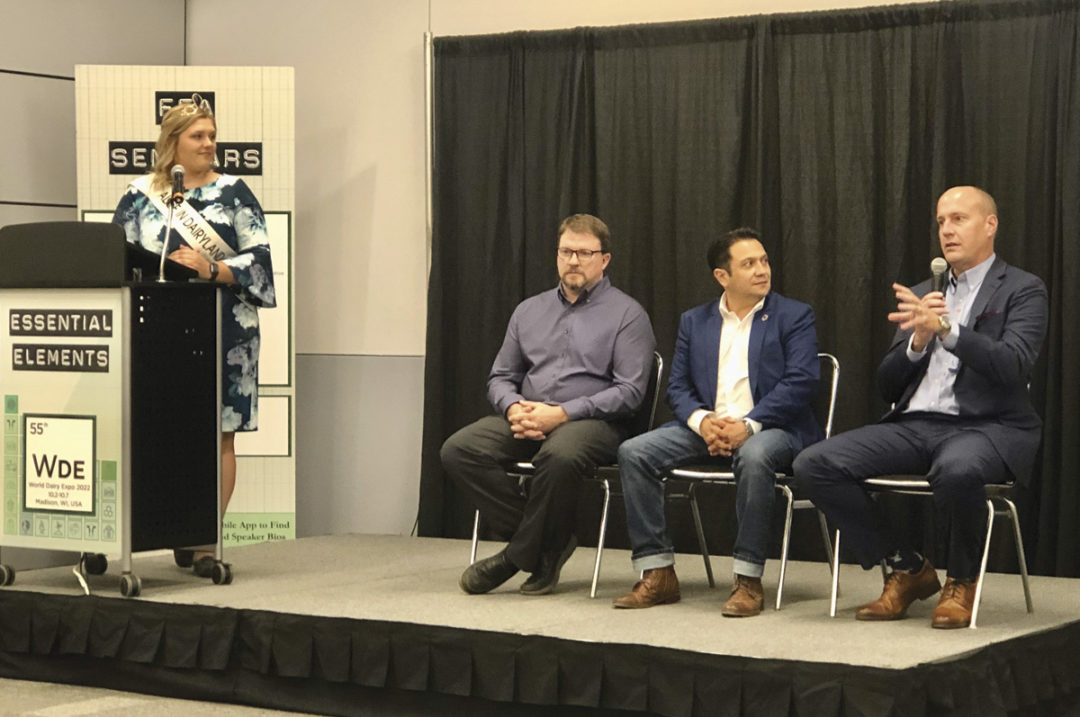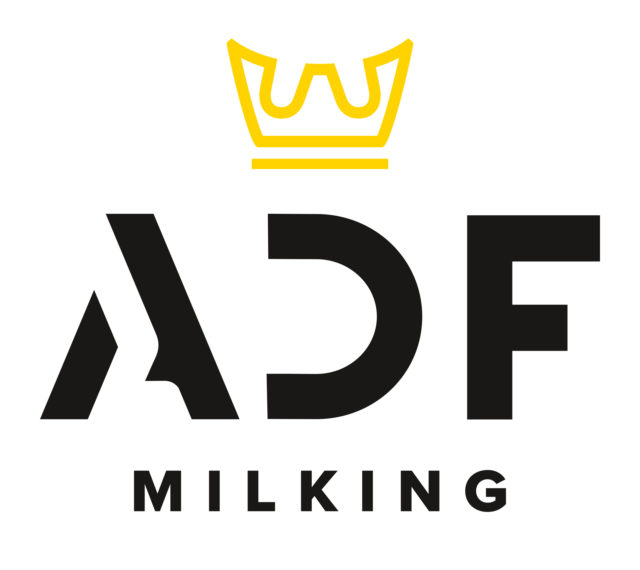A collaborative study among the Association of Equipment Manufacturers (AEM), the National Milk Producers Federation (NMPF) and Dairy Farmers of America (DFA) revealed significant environmental benefits of modern dairy, hay and forage production technologies in North America over the last 15 years.
“We are living in a new age of agriculture,” stated Curt Blades in an AEM press release about the research findings. “Today’s modern … technologies have an enormous positive impact on dairy farmers, cows, consumers and the environment.”
Blades is the senior vice president of industry sectors and product leadership at AEM.
One component of the study reflected on dairy industry practices from 2007 to today. With resource optimization from technology, the industry produces the same amount of milk with 930,000 fewer cows, has reduced feed enough to fill 3,200 National Football League stadiums, has reduced the need for cropland almost equal to the size of Maryland, has improved greenhouse gas (GHG) emissions equivalent to removing 4 million cars from the road and has improved water use so much so that the savings each year could supply New York City for two years.
The research revealed that not only has technology played a critical role in the industry’s output and sustainability but so has insights driven by data, genetic selection, large-scale dairies and knowledge sharing.
Such findings position the dairy industries in the U.S. and Canada to increase milk yield by 11%; decrease land use by 9%, feed use by 19% and water use by 4%; and decrease GHG emissions by 19% all by 2030, according to the final report.
“If the road we’re on is any indication, the next 15 to 20 years are going to be quite interesting,” said Chad Huyser, president of Lely North America. “That’s what we’re trying to do with the study – put things out there and collectively look at how we bring all the technologies together.”
Huyser was joined by Fabian Bernal, head of sustainability for DeLaval, and Matt Daley, North American President of GEA Farm Technologies, at World Dairy Expo 2022 where they spoke of the unveiled results and what they mean for the industry. The panel was moderated by Taylor Schaefer, Wisconsin’s 75th Alice in Dairyland.


When you think 10 years ahead, what does the dairy industry look like to you?
BERNAL: My belief is the farmers are simply going to be capable of managing data a lot better. Farms will be capable of using their own data for better decision-making processes. Small data will create sets of large data to make better decisions around our market. By then, farmers will have a larger influence on what markets will look like. Will there be more consolidation? Yes. And productivity? Yes.
DALEY: In the U.S. and Canada, there will be a more-regulated environment. Whatever those regulations may be, we will meet that need with product. Every day there are 18 to 20 new digesters installed in the U.S. at the moment. We’re going to have more powered energy. Farmers, themselves, are getting better at what they do, which means they have to be cognizant of the public that surrounds them and what they see. We’ll see a lot more openness because the public needs to know where food comes from.
HUYSER: We have to keep the animal front and center. We have a transparency opportunity to show how our farms are producing and be clear with consumers where their food is coming from. The macro-challenge is the demand for nutritional sources as the population grows. We have to produce in a stable, data-minded way that best utilizes the resources we have like land and water. Like it or not, we have to run head-long into it because this is where we’re being pushed. We should look at it as an opportunity, and I believe data technology is a key part of that opportunity.
The study shows how dairy farmers reduce water usage to sustain New York City for two years. How are dairy farmers accomplishing this, and how do we continue to grow that number?
BERNAL: I do believe water is simple, but the most difficult thing to manage and measure extremely well. When we start talking about water as a key ingredient in a dairy ration as a nutrient, a lot changes. We’re unlocking interesting things there and things we’re seeing are great with the technology and application farmers are doing today, but there’s more to be done.
DALEY: It was a big deal when farms started using water twice with a plate cooler. Now, water is used three to five times or for forever on farms. The reclamation systems continue to become more professional. You can measure how well you’re doing by how much water you’re pumping out of the ground every day. We’ve improved by being more professional, taking care of the cow better and there are a lot of new technologies coming from that direction. There’s a big need to reduce water usage, and our industry is poised to meet that need head on.
HUYSER: The study looked at land utilized to grow feedstock as a critical component to cost of production, health of the animal and doing that in a smart way. Farmers did that in a sustainable way as they monitored water usage in and around the dairy. As we look ahead 10 years, certain parts of the nation are going to be challenged by water supply as cows continue to move where resources are available. Basics of smart irrigation, from land-base application to nutrient management, is a critical component.
Feed usage has been reduced by 3,200 NFL stadiums. What ways are farmers able to do this?
BERNAL: My expertise is in animal welfare and productivity, and there was a lot happening in the early 1990s and 2000s. I saw technologies coming up, the metrics and explaining those metrics to farmers. Technology and science have taken us to this place and the application has been taken to heart, and farmers have figured this out. With more of these data points, technologies will allow farmers to make these applications and drive productivity. Most importantly is knowledge transfer, and farm application has created opportunity like none other.
DALEY: Not a day goes by where the nutritionist or vet or consultant isn’t working on our farm to use science. Young farmers of today are much more knowledgeable and educated on the subject matter. They are utilizing the science so much better, and that’s why we’re seeing such big gains. Real science has really come a long way in our industry. You don’t have to harvest as much with some of the new digestibility of forages, and it’s still the high-quality feed you want without running the tractor across the field as much as you used to.
HUYSER: Some technologies on modern hay equipment today have farmers harvesting and making decisions based on optimization of the greatest quality out of the field. We know feed is the number one driver on production. How do we use that feed? More importantly, how does she utilize that feed? Looking across the genetic potential, how do we feed her with the genetics we know and how traits play into each other? When we understand that fully, we start to see opportunities of feeding less overall feed, but there’s more production and a healthier animal. Farmers can benefit, financially, and we build consumer awareness. There’s a strong message there.










